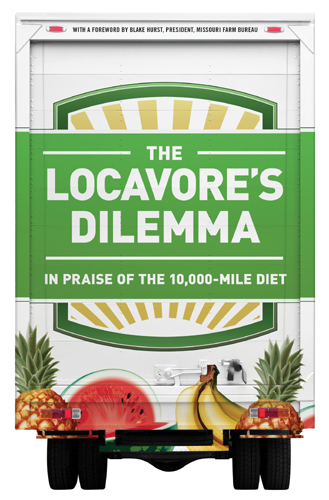| |
 |
|
Publisher:
PublicAffairs
HARDCOVER | ISBN 978-1586489403
Pub date: June 05, 2012
Price: $26.99/30.00 Canada
258 pages
|
|
Excerpt 1 |
|
To a locavore, the future of food looks pretty much like its
past: Farmers markets in every small town and city neighborhood
where people rediscover the joys of true food and get
reacquainted with one another. Seeds from farm-saved stocks
rather than commercial producers. The rehabilitation of ancient
"heirloom" cultivars developed before synthetic fertilizers and
pesticides came along. The displacement of factory-made
pesticides by traditional "natural" products based on plants and
minerals, and of factory-made fertilizers by animal manure and
rotating fodder crops such as clover and alfalfa. [...]
This stance, however, begs an obvious question. If this past
golden age was so great, why were long distance trade in food,
modern agricultural technologies, and modern production plants
and animals developed? What if some heirloom varieties had lower
yields because they were less resistant to diseases or to
mechanical handling and transportation? Could it have been the
case that seeds purchased from commercial suppliers offered
access to superior germplasm and were of better quality, purity,
and were available at more convenient times? Hasn't "natural"
manure always been dirty, smelly, chock-full of pathogens, and
requiring several months of composting? Could it have also been
the case that supermarkets and large chains have displaced
farmers markets because of their more convenient hours, better
storage and parking conditions, greater mastery of logistics and
inventory management, or better quality products and lower
prices?
In the end, was our globalized food chain simply the result of
colonial and corporate agri-business raiders who crushed small
farmers, packers, and retailers the world over because they
could? Or is it plausible that modern practices are but the
latest developments in a long line of innovations the ultimate
goal of which has always been to increase the accessibility,
quality, reliability, and affordability of humanity's food
supply?
|
|
Excerpt 2 |
|
Food production and distribution is a complex business, so let
us begin by making the obvious point that not all "local" food
is created equal and that some of it is perfectly fine with us.
For instance, New Hampshire maple syrup, California
strawberries, Alaskan salmon and crabs, Washington apples,
Florida oranges, Michigan cherries, and Iowa corn are among the
best and most affordable in the world and, as a result, have
long been enjoyed by nearby and distant consumers alike.
Competitively priced, high-quality seasonal local fruits and
vegetables have also long been sought after by nearby grocers
and restaurateurs alike. "Hobby" gardening is its own psychic
reward and should not be judged by economic criteria. In
isolated rural areas where land is cheap, game animals abundant
and economic opportunities limited, it often makes perfect sense
to cultivate large vegetable gardens along with fruit and nut
trees; to keep animal coops while having a few grass-fed
ruminants roam over the surrounding pastureland; and to supply
one's pantry, root cellar and freezer with the results of
hunting, fishing and harvesting wild food of various kinds.
Local food items that might not be the most delicious or
economical might also have other redeeming qualities, such as an
orchard that survives on "pick-your-own" family outings or an
otherwise average vineyard to which a gourmet restaurant has
been added.
Read more...
|
|
|

